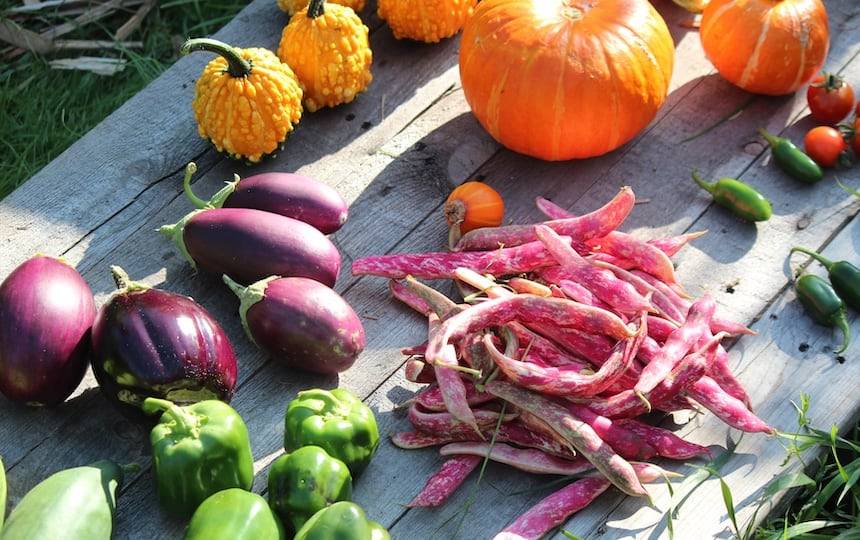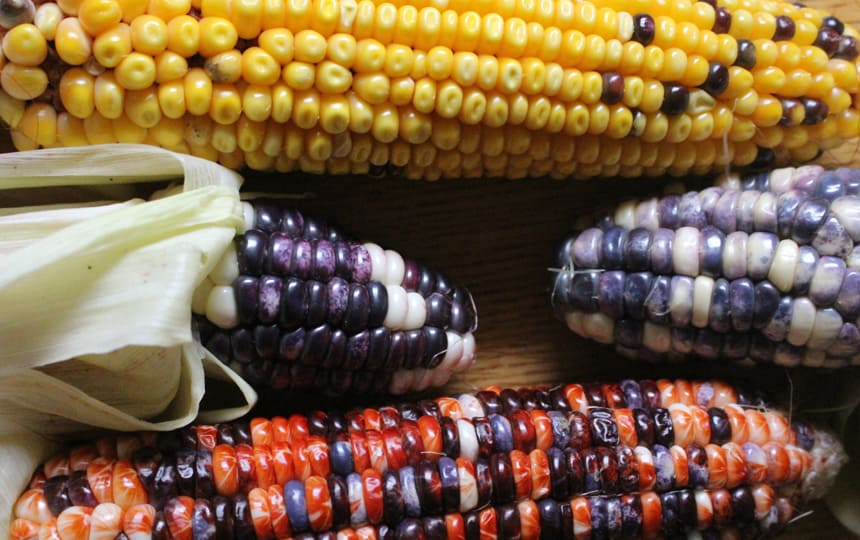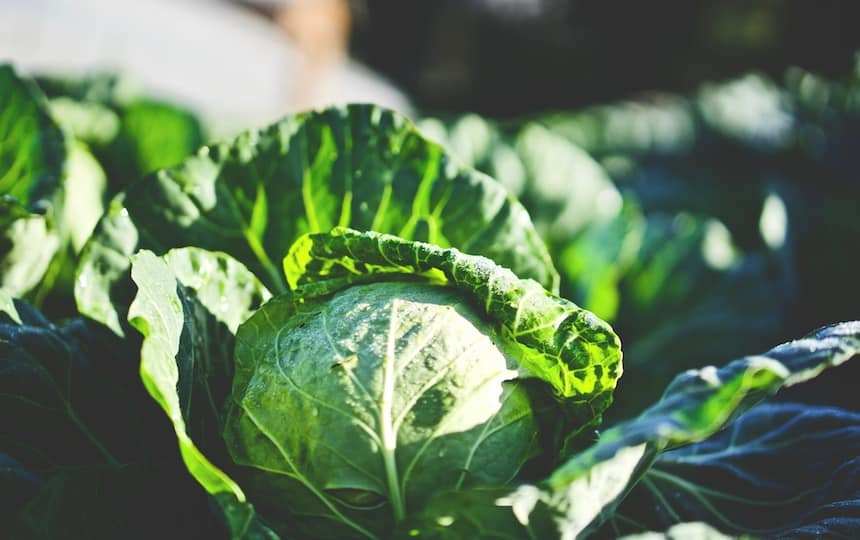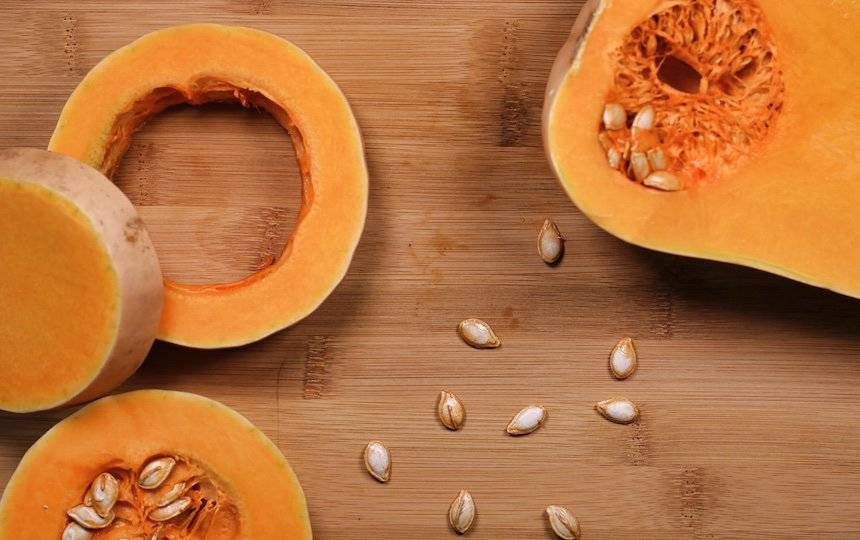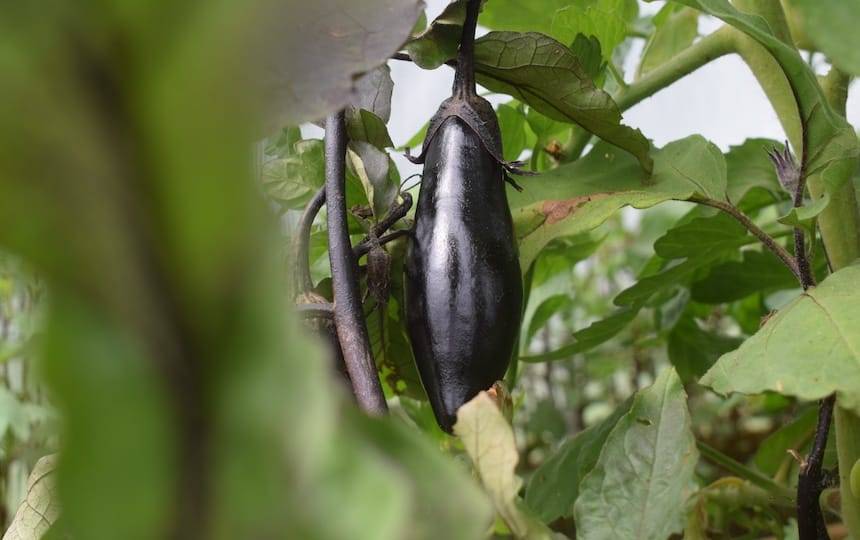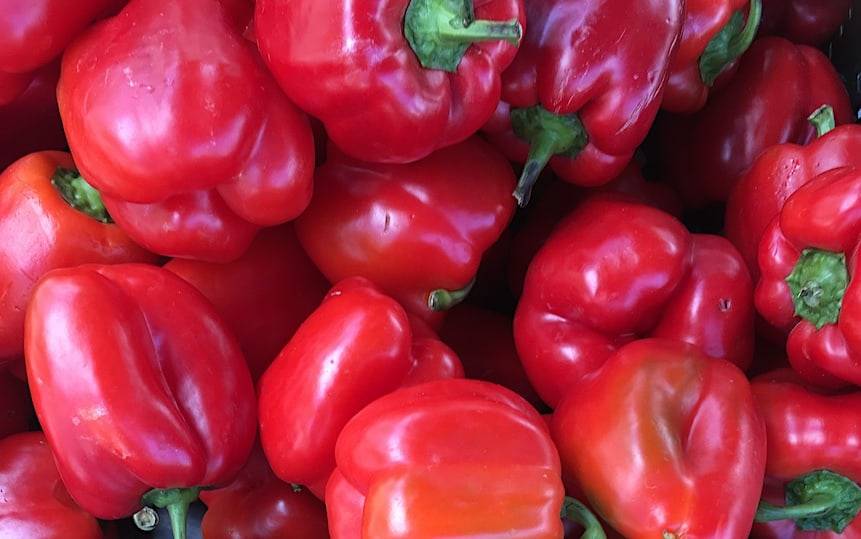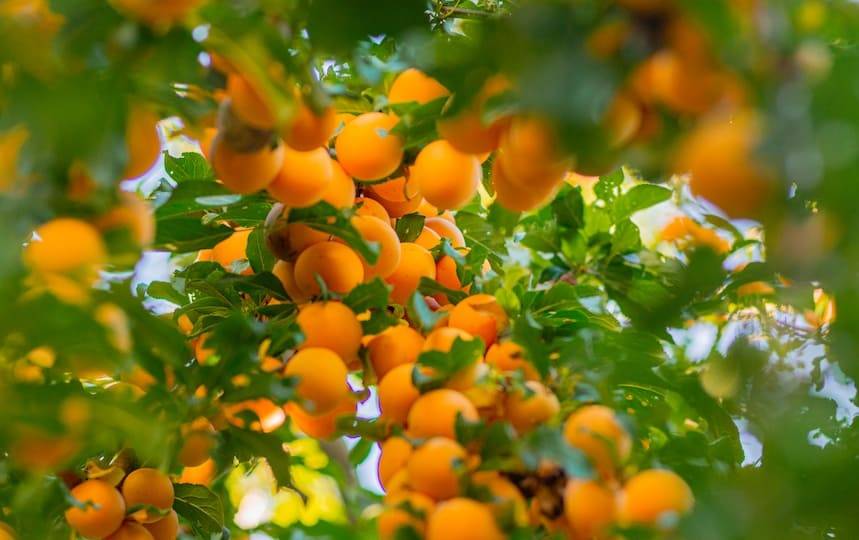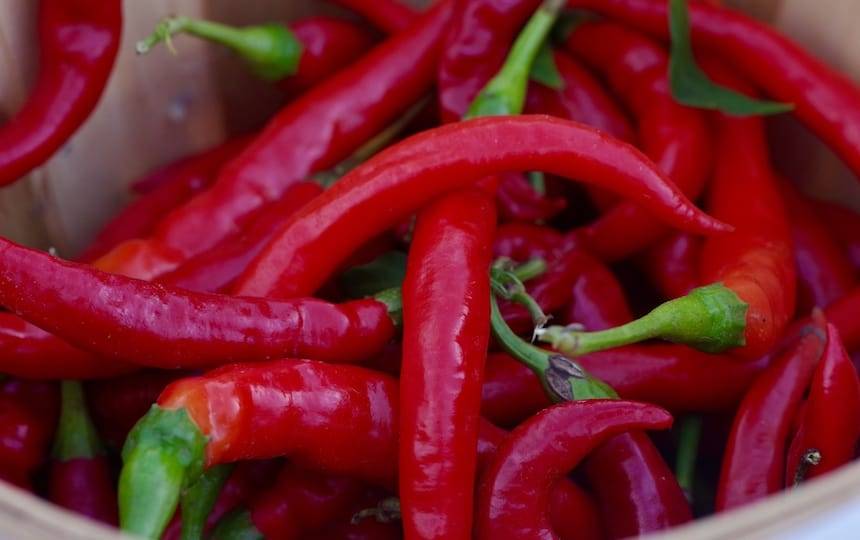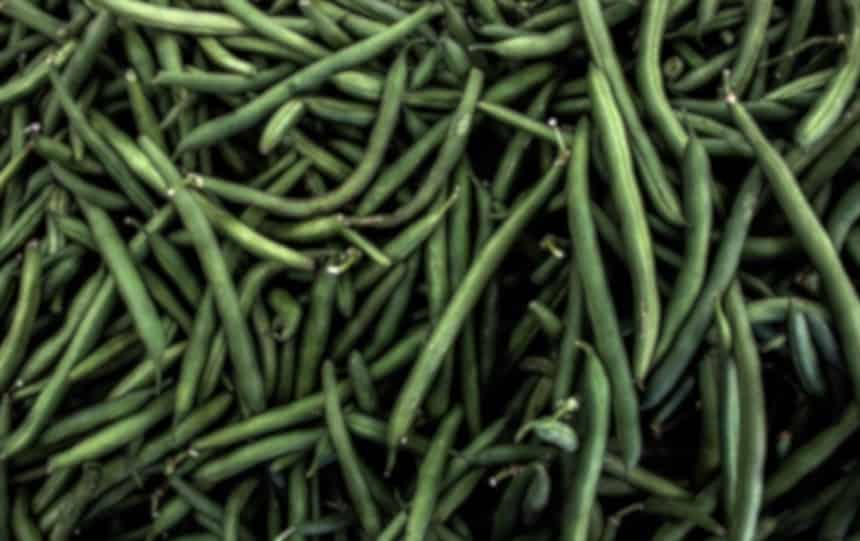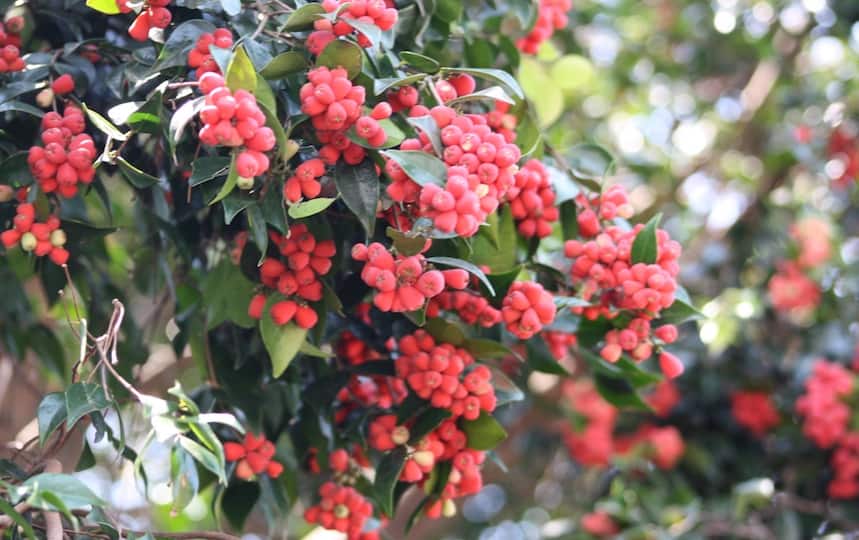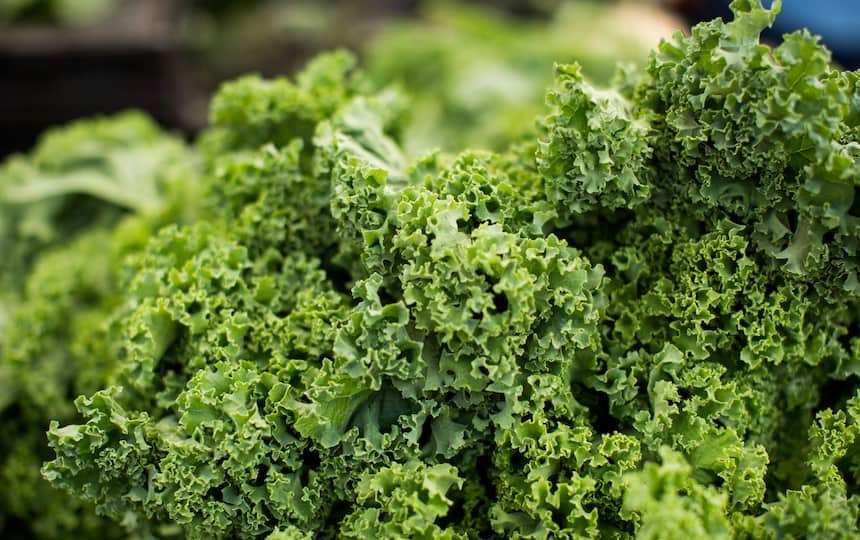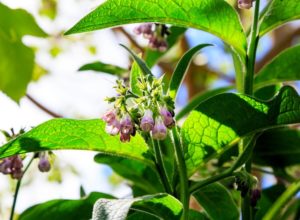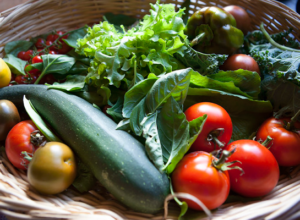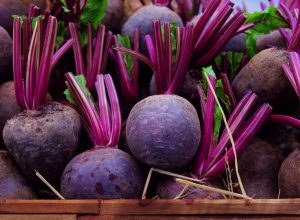Our April Garden Guides are here, with all you need to know about what to do in your garden this time of year, depending on which climate zone you’re in.
There is lots happening in the garden in April! Our April Garden Guides will show you what to do in your patch if you live in one of the following climate zones:
Cool Temperate Garden Guide
by Christina Giudici of Food In My Back Yard
What to plant?
Hard neck garlic (the ones that have a flower stalk) can be planted this month, and also into May. Soft neck garlic is usually planted in May-June. It’s best to break up the heads into individual cloves the night before or morning of planting, as the cloves loose vitality once they’re all separated. Plant with the flat bit down and the pointy bit up, so that the pointy bit is just below soil surface.
You can still plant brassicas such as broccoli and cauliflower. Best to go with seedlings at this stage rather than seed. See if you can find some of the groovy broccoli varieties such as romanesco (lime green fractal looking) or purple sprouting (lots and lots of lovely purple side shoots for many months).
Broad beans and peas can go in as seed; don’t waste money on seedlings of these big seeded types. Another winter favourite is English spinach, direct seeded to avoid bolting. These three all like a bit of lime raked into the bed a week or two before planting.
Good old spring onions can always be planted, and now is a good time for non-keeping salad onions such as red or white varieties. Winter lettuce, Asian greens, and silver beet planted now will keep you in fresh greens in winter and early spring.
Maintenance
As you clear summer crops such as zucchini, tomato and sweet corn, rake up any mulch that was on those beds and compost it. This will diminish the habitat for slugs and snails that would otherwise overwinter in the mulch.
Pests and disease
It’s good practice not to compost your spent tomato vines. They may carry nasty viruses, and no matter how good and hot your composting is, the viruses won’t be killed. So this is one of the few times we put garden waste in the bin.
Young brassicas are still vulnerable to late populations of the cabbage white butterfly. Look for holes in the leaves, turn them over and squish any little (or big) green grubs. Or spray with Dipel which will kill the grubs when they ingest it, and won’t harm beneficial insects.
Harvest and preserve
If you haven’t already done so, pick your pumpkins this month before the frosts come. Always leave a bit of stalk attached, and the pumpkin will extract the last bit of goodness from the stalk as it dries off.
Try to resist carrying big pumpkins around by the stalk, as it might break off and leave a vulnerable spot where disease can get in. And the pumpkin might fall on a vulnerable big toe!
After harvest, let the pumpkins sit somewhere sunny and out of the weather for a few days to help the skin cure. Then store in a cool, dry, dark spot.
Roast tomato sauce anyone? If you have plenty of tomatoes, slice some into pieces and spread in a single layer on a baking tray. Scatter some garlic cloves (the little ones that you decided not to plant are ideal – no need to peel them) and salt.
Roast in a cool to moderate oven for an hour or so, until the tomatoes are collapsed and soft. I usually do a batch when I have the oven on for some other purpose. When cooked, put them through a food mill, and then freeze, or bottle and process in a hot water bath for pantry storage.
Permaculture principle #4: Apply self-regulation and accept feedback
Have a think about what you grow and what you eat. Are there things that you like the idea of growing, but always end up letting get old and soft in the fridge? I did that with parsnips one year. And in winter we don’t seem to eat much lettuce, so if we have lots of lettuce in the cooler months, it tends to all go to seed in early spring.
By watching what you throw out to the chooks or compost, you can, over time, adjust your planting to match your eating habits.
Are your plants looking green, lush and fantastic but seem to be vulnerable to lots of insect or fungal attack? Maybe you’re overdoing the feeding, especially with high nitrogen inputs like blood and bone or chook poo.
If plants are fed too much liquid fertiliser or bulk nutrients in the soil they can become lush and soft, and attract more pests and diseases than if they are working a bit harder. Just like people really. So observe closely, and aim for a balanced diet for your soil and plants.
Mediterranean Garden Guide
by Nadja Osterstock of Nadja’s Garden
I find April the mellowest month of the year. The days are short enough now and the sun mild enough to really enjoy soaking up some rays, while there’s still a great range of garden snacks to graze on. W
hile the conditions are perfect for planting, it’s also just a perfect time to pause and do nothing in the garden. By which I mean just be in the garden. Decisions about what to do in the garden seem to flow much better after that.
Snacking might include persimmons, lillypillies, autumn raspberries and mulberries, late figs, melons, pomegranates, apples, pears and nashis. Then for dinner, some eggplant, pumpkin, chillies, capsicum, basil, parsley, spring onions and salad greens, putting aside their seeds to clean, dry and store.
As the sun starts to shift towards its winter position you pick up clues about where the winter shadows will fall and where the cosy sun traps will remain. You also remember what you planted in those beds last season, and the time before that, and you choose a new family of veg to take their turn in the rotation for this season.
Re-energised after some resting and feasting, you pack away the last of the summer shade materials, cut back unwieldy vines to rediscover lost paths, prune the apricot trees and mulch or make compost.
Any empty beds have their soils replenished with compost, well-rotted manures and fertiliser. The beds with no immediate career plans get planted with green manure seeds to improve their soil.
The weeds that have sprung up since the first autumn rain are pulled out and replaced with native tubestock – shrubs, ground covers, trees, grasses – to attract birds and insects into the garden, to provide windbreaks and flowers and more mulching material in years to come.
And you sow carrot seeds, artichoke and asparagus crowns, soaked beetroot and silverbeet/rainbow chard seeds. Plant seedlings of broccoli, cabbage and cauliflower, wonderful mixed bouquets of lettuces and kale, onion and spring onion sets, and garlic cloves pushed in thumb-deep.
Permaculture principle #4: Apply self-regulation and accept feedback
It’s good to be on friendly terms with reality, isn’t it? This includes living within our means and within the planet’s limits. Sure, we can stretch the definition of a climate zone by exploiting microclimates for a wider range of plants, but we’ll get a bigger harvest if we major in those that are suited to dry temperate conditions.
We can go nuts pruning and compost-making when the weather is so inviting but we might pay later (as my back is reminding me, again).
Nature has ways of telling us where we’re going wrong or overdoing it. Keep too many green peaches on a branch and the branch breaks just before they ripen. Plant carrots too densely and they shade each other out.
Leave broad beans in the ground too long for green manure and they become difficult to dig in and don’t add as much goodness to the soil. Leave the soil bare and weeds will arrive to fill the niche. These are not disasters, just learning opportunities.
Some gardeners are great record-keepers, writing down and learning from what they have done each season and how their garden has responded. Others talk to their plants and listen in a myriad of ways. It’s all about developing a relationship with nature where we are open to learning.
Tropical April Garden Guide
by Kathleen Hosking of Solution Focussed
What to plant?
April is a transition period from the wet season to the dry season and so planting is risky. Seeds can be washed away and young plants bashed and drowned.
Now may be the time to plant all the cooler climate vegetables that are normally grown in summer in the cooler climates. Try everything you want to grow. The list is endless. I put in kale sometimes, knowing that the flavour is not the best without a frost, and hope for some unusually cold weather. Put some in now and some in later after the weather has cooled a down.
Prepare beds for further planting by applying well-rotted manure and compost and dolomite to sweeten the soil. Fork it in and allow maturing for about two weeks before planting.
Keep seed beds moist but not wet. Beans may only need one further watering prior to germination. Smaller seeds like carrot are more sensitive and will need daily watering and a light layer of mulch on top.
I have also used thick hessian bags to keep the soil moist till germination. Check daily for germinating seeds and remove as soon as most of the seeds have germinated.
Planting seeds of hearting lettuces and plants which form a bulb like onions early allows for substantial vegetative growth before the cold weather initiates hearting or bulb formation.
Maintenance
The weeds have not stopped growing vigorously so keep on top of them. I put down a cotton or feather doona and pile the weeds and prunings on top. When it is about a metre high I then cover it with another doona or cotton sheet. This is then covered with a light layer of mulch purely for aesthetic purposes.
The heaps can be planted into when they have started to lose some height. For an easy way to fertilise fruit trees I make the piles of weeds under the trees and then leave them to rot down naturally. This kills anything growing under the tree canopy and provides slow release fertiliser for many months.
Turn in any green manure before it flowers so that it can break down while the weather is still warm and the humidity high. This will increase the rate of decomposition in the soil.
Planting can commence in these areas prior to be breakdown but added nitrogen will be needed.
Fertilise trees and perennial plants with trace elements to build the soil up for the dry season and replace micronutrients leached by the heavy water inundation.
The lemon myrtle has just finished flowering with no seed set, the riberry is just developing flower buds and the sims acacia is still flowering and getting good seed set.
Start looking at trees which will need to be pruned at the end of the wet season. Pruning now will not cause the flush of new growth which follows pruning during the wet season when almost everything is in active growth.
Harvest and preserve
Harvest the last of the wet season crops now. Those left in the ground will provide growing material for next wet season but the tubers will not be very palatable.
The sweet leaf is slowing down as the weather cools down so stop harvesting for the dry season.
Harvest plants like yard-long beans, okra, capsicum and eggplant regularly to keep the plant in active growth.
Permaculture principle #4: Apply self-regulation and accept feedback
Systems theory is one of the underpinning principles of looking at how things work in this world and I don’t doubt any others which may exist. It is an integral part of both social work and permaculture.
It recognises that we live and work within a variety of systems which impact and interact with each other. Without the recognition of the system it would be impossible to accept feedback and apply it.
We have internal systems which work to maintain stasis and prevent changes which would cause the death of the animal. Without a feedback mechanism we would not know what is happening and therefore have no knowledge of impending disasters and the action to take to avert the disaster.
The feedback system also gives information on the impact of any changes so becomes a system in a state of continual change with minor adjustments happening as needed to maintain stasis, optimal functioning and health.
The outsourcing of parts of our daily lives interrupts the self-regulation and feedback loops that would normally provide us with information. We have forsaken the most important elements of our lives in exchange for generating income for others and call it liberation and progress.
A balance between all aspects of our lives including working for liberation and progress in commercial areas is safer for us as individuals and for the world.

